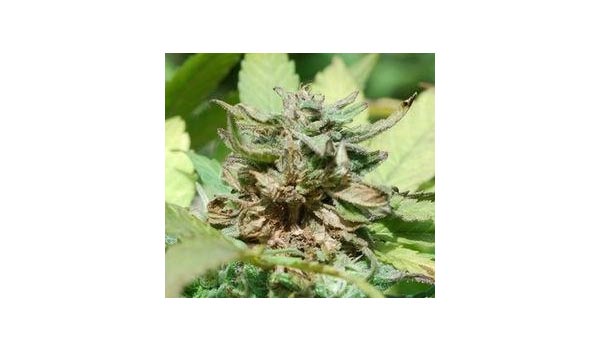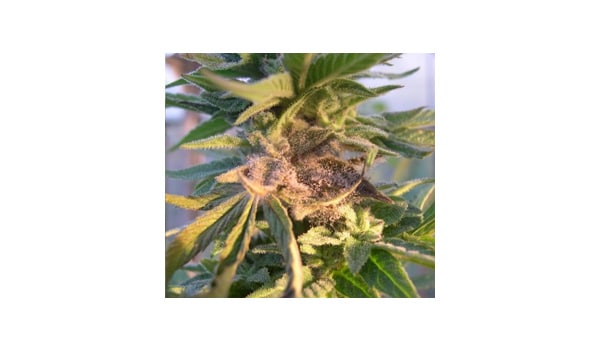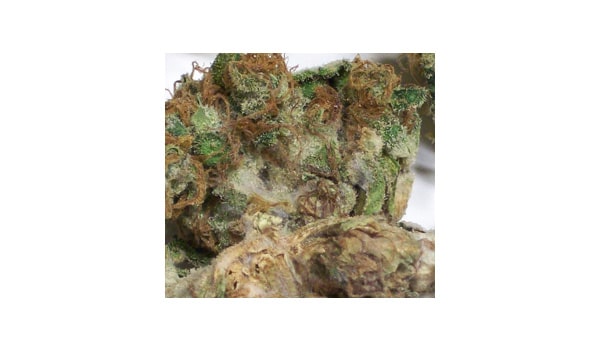
Bud rot (also known as gray mold or botrytis) is one of the most devastating fungal diseases to hit marijuana crops. It thrives in cool temperate climates where a high level of humidity is present.
It is so harmful to your plants that it could destroy your whole garden of marijuana plants in less than one week! It will kill anything in its path, including seeds that are sitting in the soil and very young plants that have only just popped up.
It’s a marijuana grower’s absolute worst nightmare. You, therefore, need to do everything in your power to keep gray mold from infesting your precious plants.
What is bud rot

Gray mold (bud rot) is a fungal disease that lives best in cool, humid, temperate climates. It is not location-specific and it attacks marijuana plants in all stages of life.
Gray mold comes from a fungus called Botrytis cinerea. This fungus can rot your buds from the inside out – thus gray mold’s nickname, “bud rot.” Botrytis can ruin other plants besides marijuana. Wine grapes, strawberries, and peonies also can be devastated from a gray mold infestation.
Gray mold can reach your plants any time through its dusty gray spores that are often transported through blowing in the wind as well as water. Plants need to have actual contact with gray mold spores in order to get bud rot – otherwise it is impossible. These spores are extremely easy to transport, unfortunately.
Once they have reached your site, they get inside your actual plants by entering through a “wound” or tear in the external plant tissue. If you train your plants, their stems might have cracks that mold could travel through. Any damage caused by caterpillars, snails, worms, mildew, or other pests can also create a “tunnel” of sorts for gray mold to get inside your plant.
Signs of bud rot

Gray mold bores into the youngest stems right where the soil sits and then turns these stems brown, making them soft and rotting. The stems then lose rigidity and fall over, or “damp off.” Gray mold also likes to attack the stems of older, more mature plants.
It first forms a brownish gray mycelium mass, which looks like a foundation of sorts. This then starts being covered by fungal spores. This sort of smothers the plant, making it turn yellow because it doesn’t have enough chlorophyll to remain its healthy green color.
If the gray mold circles all the way around the stem, it will weaken it until it has lots of cankers and is actually soft. There will be breakage where the cankers are, and any growth above this hub of disease on the stem will start wilting.
That is only part one of gray mold’s devastating behavior. After it’s attacked the stem, it will next move on to your female marijuana plants’ moist buds. The leaves will start turning brown and will wilt, and then the pistils will follow suit. The buds will eventually be totally covered in the gray mycelium and will turn into a grayish brown slime – making them totally useless when you harvest your plants.
Gray mold materializes in different ways. It can affect only the biggest and fattest buds of your plant, or (especially if conditions are particularly wet) it could form visible spots all over the plant. The cola might also be the only part of the plant that starts to turn darker and discolored, and maybe is even drying up.
The outside of the buds will look like it is drying in parts. The rest of the plant, on the other hand, may still appear to be thriving. Gray mold will always target the wettest spots on your plants first. If your plants have large colas, they have a large area inside that receives no air exposure and is therefore very moist. This means that this attacker is very likely to target these big colas first.
People generally start to notice a gray mold infestation once they notice deadened spots on their marijuana plant. It might also show up as white mold on the bud’s exterior at the beginning. If you catch it at this stage, you should take immediate action.
If it is indeed gray mold, you will be able to see that the inside of the bud is a dark gray or brown and appears to be dusty. Unfortunately, since gray mold moves so rapidly, it is unlikely that you will catch it when it is white and fluffy in its early stage.
You are most likely to find yourself with a gray mold problem if your plants are growing in a low-light environment. It is called gray mold because, although it starts out a powdery white color, it turns into brown or smoky gray color. Once you see these and other colors, you will know that the damage to your plant is already extensive.
Not sure if your marijuana plants suffer from a bud rot infection? Check the article Marijuana diseases for a list with pictures of all possible marijuana diseases
How to get rid of bud rot

Now you probably understand the importance of avoiding gray mold from growing on your marijuana plants at all costs. If you are an indoor grower, there are certain steps you can take to decrease the chances of it ever becoming a problem. First and foremost, your plants need a warm, dry, breezy environment to live in.
For instance, you should always keep the grow room temperature higher than 70 degrees Fahrenheit, and don’t make the room so humid that your plants are visibly wet. The humidity should be kept below 50% at all times. These elements cannot be controlled in outdoor environments, of course.
Keeping your plants’ leaf density down is also a good way to increase air exposure and, therefore, decrease the likelihood of gray mold developing on your plant. Just be sure you don’t take away too many leaves because you still need as many as possible to keep pumping light energy into your plant for a successful flowering phase and harvest. Prioritize which leaves you remove by targeting ones that are covering other leaves or sites where buds grow.
If you are an outdoor marijuana grower, hopefully, you started your growing season off right by choosing a strain of marijuana that is well suited to your specific climate. If you live in a rainy and cool area, for instance, you should probably choose a strain that is specifically designed for cool, rainy climates. One such strain would be one that automatically enters the flowering phase, meaning its life is shorter than an average marijuana plant.
You can take some extra steps that you might not have thought about as well, such as changing your clothes before stepping into your grow room. This will limit the spores and pests that can be carried in via your clothes. If you have a house pet, keep it away! They can easily transport fungi and other living things you won’t want near your plants. You should also sanitize pruning shears every time you plan on using them so as not to transport any fungi or bacteria from the blades to the plants. Most of these precautions will work the same for outdoor grow areas as well.
If you water your marijuana plants during the day rather than at night, your plants will have an adequate amount of time to dry off before darkness falls again. This same principle can be applied to indoor gardens – just make sure you water your plants early enough so they can dry before you turn off the lights. Gray Mold loves moisture and darkness, so at least take away one of those elements to lower the chances of it infecting your plants.
One of the most important ways of keeping it from finding its way to your plants is to keep proper ventilation within your grow room. The moving air should go through every bit of every plant. Don’t be afraid of working hard during this tricky planning process.
You can also be more active in the prevention of gray mold. Try spraying bacillus subtilis or an oil spray with neem oil or sesame oil onto your plants to prevent it or form a barrier that doesn’t let mold germinate. You can also look into using Potassium Bicarbonate (KHCO3) to keep from molds and fungi from starting to grow. This is an organic product that comes from humans, animals, and plants – it is a sort of pre-existing self-defense system.
If gray mold has found its way to your plants despite taking all these precautions, all is not lost – at least not yet. If you spot a plant that is clearly diseased or dead from gray mold, remove it completely and destroy it. Do this to every plant you see that has the infestation. Obviously don’t add the destroyed plants to your compost pile, since it would cause even more problems. Simply put the whole plant into a sealable plastic bag and throw it away tightly sealed.
If you are absolutely dedicated to keeping your plants where they are instead of discarding them immediately, you can instead prune the affected leaves and buds. Once you have used pruners to remove the affected parts, clean them thoroughly with rubbing alcohol or peroxide.
Another method commonly used is the application of a bordeaux mixture made up of copper sulfate and slaked line. This is what most vineyard owners use to keep gray mold under control. Copper soap or copper spray is another option that can actually be used all the way until your plant’s day of harvest. This works best when it is sprayed onto your plants each week for ten days. Finally, you can either use sulfur burners or spray your plants with sulfur in order to make the treatment airborne. You can find these at a garden center or nursery.
In general, your best way of preventing it from getting out of hand is by always being aware and keeping a close eye of your plants. Inspect them regularly for signs of gray mold or any other potentially harmful conditions. Take note of any changes, especially when your plant is in the later stages of its flowering phase.
Keep an eye the weather, as well. It could tell you a lot about when to be the most suspicious of gray mold, such as just after cooler temperatures and rainy days. When you do know that rain is coming, you can simply cover all of your plants with a tarp to block the worst of it. Make sure you don’t actually put the tarp on top of the plants because it would risk damaging your buds. Instead, hang it above your plants for maximum protection. Make sure the tarp is held up by the middle rather than the sides so as not to allow the water to collect in the center. An alternative would be to simply go to your plants after a rain and shake them. This will keep water droplets from becoming a comfortable place for the mold to breed.
Marijuana plant sypmtoms
– Edges of leaves will look brown or burnt
– Leaves turn darker or purple in color
– Spots on the leaves
– Abnormal growing of the leaves
– Visible mold
Other Advice
It is never a good idea to use fungicides while your plant is in its flowering stage. You also shouldn’t spray the buds that have been affected with Neem oil or burn sulfur when your plants are in their flowering phase. It won’t provide an effective means of combating gray mold, and it will ruin the taste and smell (and appearance) of your buds, thus making all your hard work pointless anyway! Fungicides are only okay to use during your plant’s vegetative phase of life.
As a good rule of thumb, you should know once you have a gray mold problem that the environment that your plants are growing in too cool and too humid with not enough airflow. If you are growing indoors, once you have removed the original gray mold this is something you should change immediately so as to avoid future infestations of gray mold.
If, however, you are absolutely unable to change your environment (i.e. if you are growing outdoors), you need to be realistic with yourself. The climate isn’t going to change, and your plants have already been infected once. Do you really think that this will stop being a problem as soon as you discard the plants that have visible signs of bud rot? Probably not.
Instead of attempting to make it work somehow, it’s better to simply start an early harvest of all your unaffected buds. Having buds that were harvested early and therefore never reached their full size and potency potential is still far better than losing most of your buds to gray mold.
If you do harvest them early, you need to be especially careful during the drying process when mold can become an issue. While generally you would want to try and dry your buds through a slow-drying process, in this case, you should dry them as fast as realistically possible with lots of consistent air movement.
0 Comment:
Post a Comment